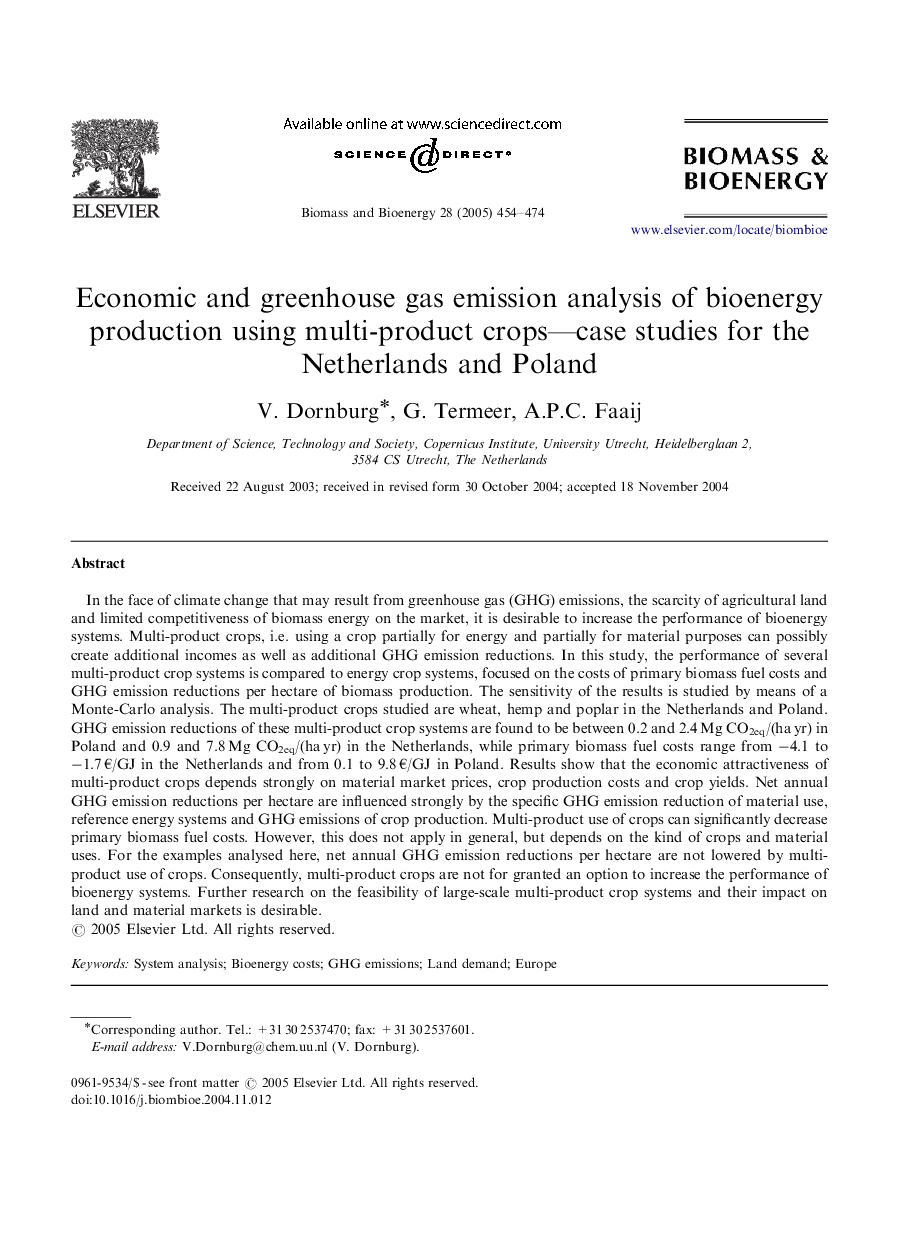| کد مقاله | کد نشریه | سال انتشار | مقاله انگلیسی | نسخه تمام متن |
|---|---|---|---|---|
| 10394003 | 888707 | 2005 | 21 صفحه PDF | دانلود رایگان |
عنوان انگلیسی مقاله ISI
Economic and greenhouse gas emission analysis of bioenergy production using multi-product crops-case studies for the Netherlands and Poland
دانلود مقاله + سفارش ترجمه
دانلود مقاله ISI انگلیسی
رایگان برای ایرانیان
موضوعات مرتبط
مهندسی و علوم پایه
مهندسی شیمی
تکنولوژی و شیمی فرآیندی
پیش نمایش صفحه اول مقاله

چکیده انگلیسی
In the face of climate change that may result from greenhouse gas (GHG) emissions, the scarcity of agricultural land and limited competitiveness of biomass energy on the market, it is desirable to increase the performance of bioenergy systems. Multi-product crops, i.e. using a crop partially for energy and partially for material purposes can possibly create additional incomes as well as additional GHG emission reductions. In this study, the performance of several multi-product crop systems is compared to energy crop systems, focused on the costs of primary biomass fuel costs and GHG emission reductions per hectare of biomass production. The sensitivity of the results is studied by means of a Monte-Carlo analysis. The multi-product crops studied are wheat, hemp and poplar in the Netherlands and Poland. GHG emission reductions of these multi-product crop systems are found to be between 0.2 and 2.4 Mg CO2eq/(ha yr) in Poland and 0.9 and 7.8 Mg CO2eq/(ha yr) in the Netherlands, while primary biomass fuel costs range from â4.1 to â1.7 â¬/GJ in the Netherlands and from 0.1 to 9.8 â¬/GJ in Poland. Results show that the economic attractiveness of multi-product crops depends strongly on material market prices, crop production costs and crop yields. Net annual GHG emission reductions per hectare are influenced strongly by the specific GHG emission reduction of material use, reference energy systems and GHG emissions of crop production. Multi-product use of crops can significantly decrease primary biomass fuel costs. However, this does not apply in general, but depends on the kind of crops and material uses. For the examples analysed here, net annual GHG emission reductions per hectare are not lowered by multi-product use of crops. Consequently, multi-product crops are not for granted an option to increase the performance of bioenergy systems. Further research on the feasibility of large-scale multi-product crop systems and their impact on land and material markets is desirable.
ناشر
Database: Elsevier - ScienceDirect (ساینس دایرکت)
Journal: Biomass and Bioenergy - Volume 28, Issue 5, May 2005, Pages 454-474
Journal: Biomass and Bioenergy - Volume 28, Issue 5, May 2005, Pages 454-474
نویسندگان
V. Dornburg, G. Termeer, A.P.C. Faaij,